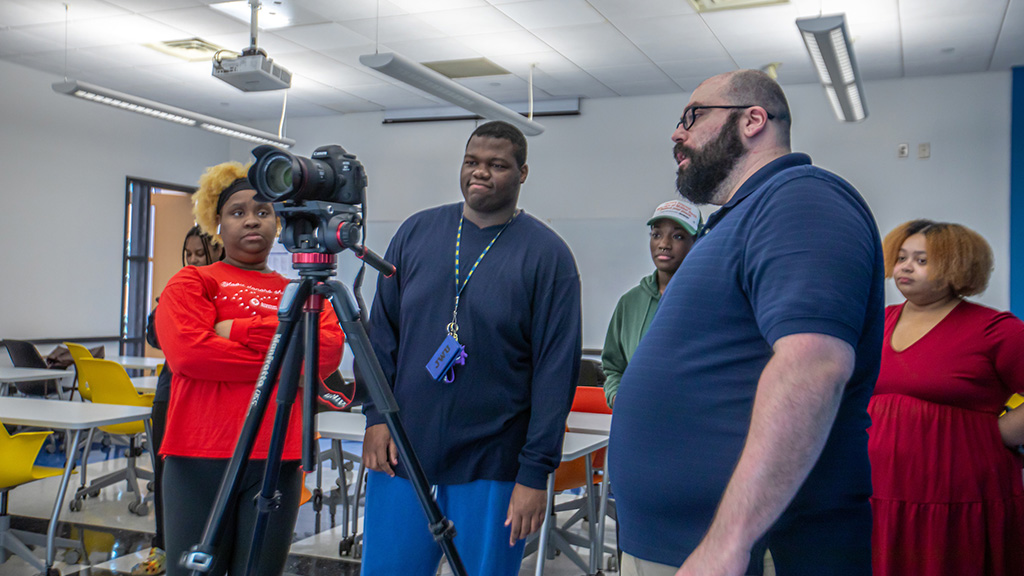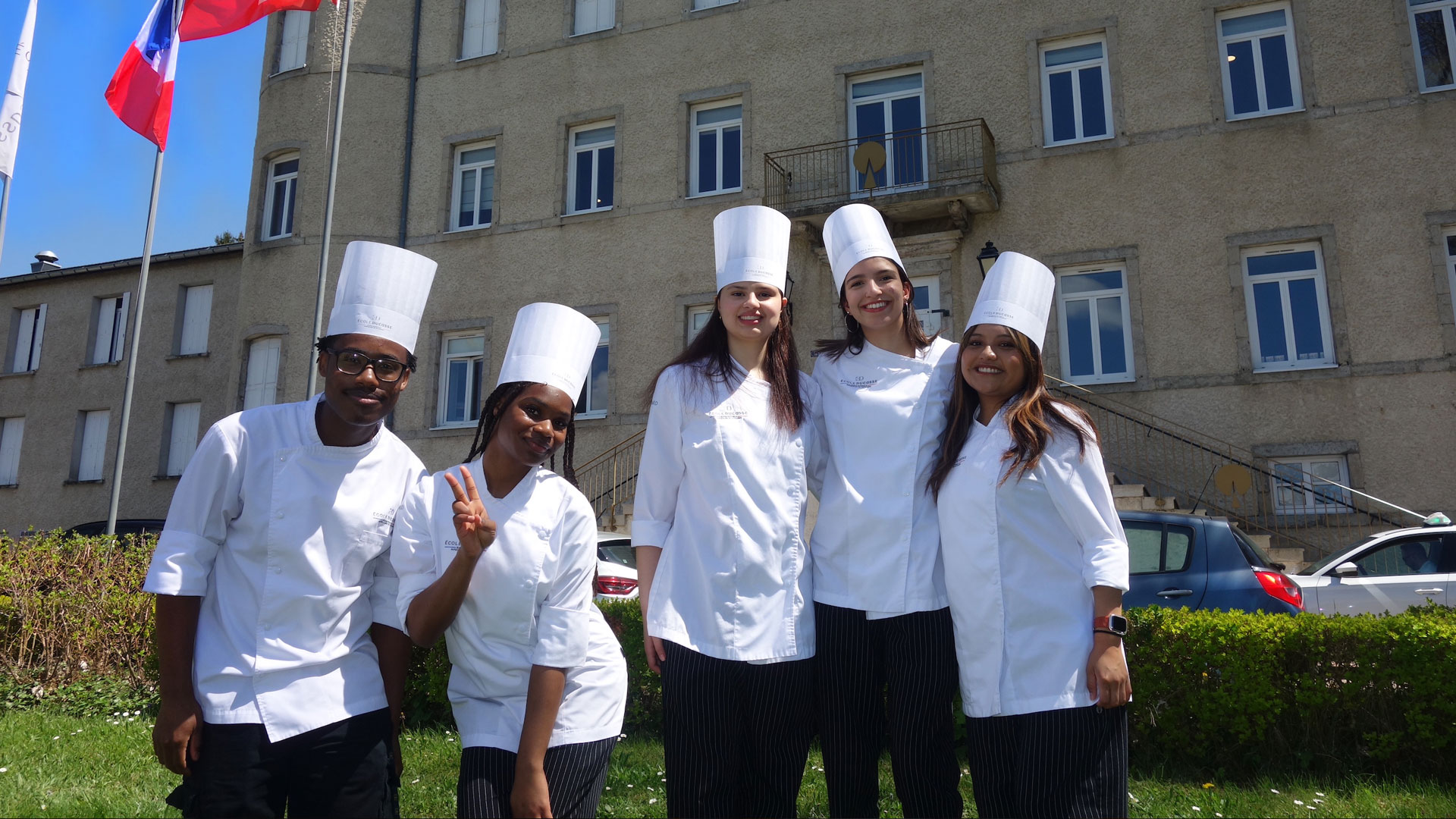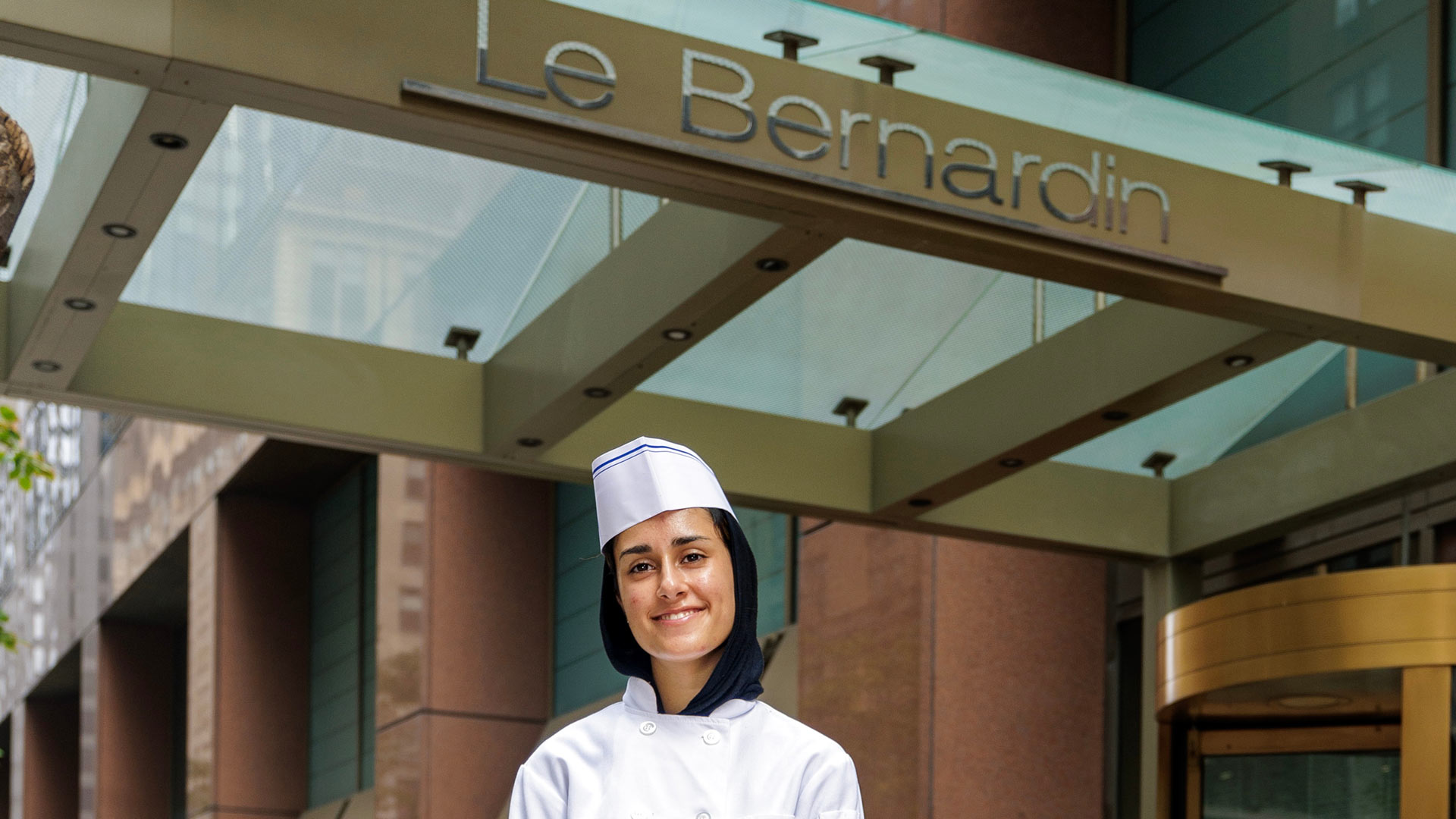Johnson & Wales University Explores the Intersection of Media and Food
Lights, camera, action! Food has become big business when it comes to media — its placement in advertisements and media content is a mainstay. As more communication platforms emerge, our methods and content of communication, especially concerning food, evolve.
“While food may often be positioned in a commercial sense, food media is a way for people to connect, learn or develop a social media presence to share this thing that we all love — food,” says Ashley McGee, senior instructor, College of Food, Innovation & Technology, Johnson & Wales University, Charlotte Campus.
Introducing an Experiential Course for Media’s Changing Landscape
Johnson & Wales University has incorporated the ever-changing media landscape into one of its English classes, “Food Media Presentation Skills.” This class, introduced on the Charlotte campus of Johnson & Wales almost a decade ago, stemmed from a desire to teach students how to perform cooking demonstrations. Over the years, the curriculum adapted to stay current, with one constant: providing experiential learning with exposure to the necessary tools to ensure successful careers upon graduation.
Coordinated by lifelong learning instructors and flavored with visits from guest speakers, this hands-on curriculum broadens Johnson & Wales students’ horizons and encourages them to explore new techniques they might not have considered before.
“As a culinary arts major, I thought learning about food and wine would be the limit for me. Now, after talking with our most recent food media guest speaker, I have come to the realization that my opportunities are endless and that a career in food media is an option for me. There are so many branches to the culinary and hospitality industry that I never considered until now,” says Azalea Joyner, culinary arts major, Johnson & Wales University.
Exploring Culinary Communication: Understanding Food Media in Education
“Food media typically refers to any form of communication, entertainment or content creation that relates to food-related topics,” says Rhonda Stewart, senior instructor, College of Food, Innovation & Technology, Johnson & Wales University, Charlotte Campus.
While food media has been around for years, only in the past decade or so has it really taken off. This can likely be attributed to the steep spike in the number of media platforms available for people to absorb content beyond the traditional mediums like radio, print and television.
Today, there is an endless parade of food content. Whether you’re watching a movie, commuting to work, listening to a podcast, watching TikTok videos, placing a food order, making a reservation, reading online restaurant reviews or looking through recipes on your phone or computer — food is ever-present.
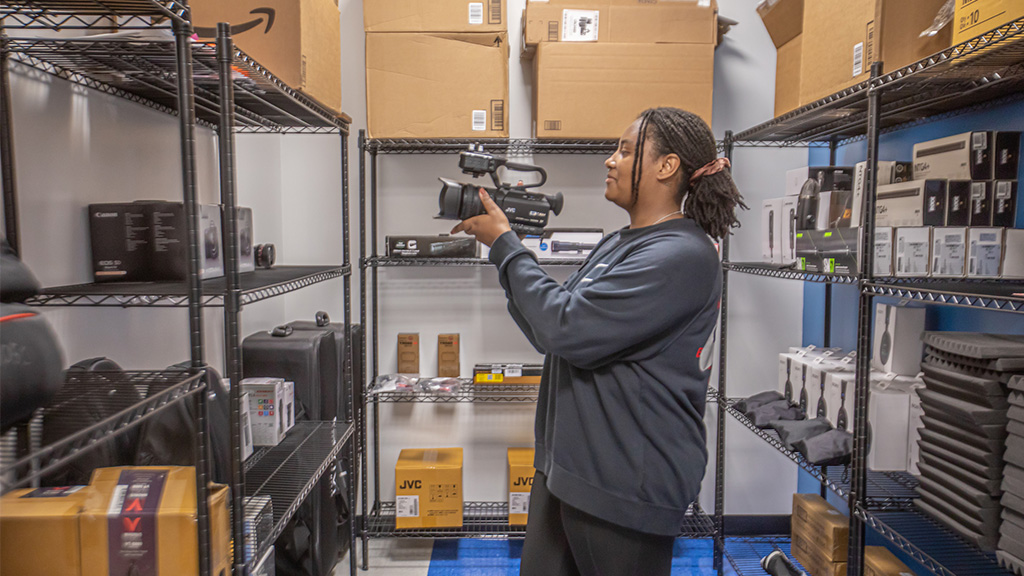
“The medium is the message” — A Look Inside the Course
At Johnson & Wales, the Food Media Presentation Skills course begins with an introduction to all the current media related to food. After this introduction, students explore their communication style and presentation. They're assigned to make their own introduction video, a task that offers valuable experiential learning.
In this video, not only do students introduce themselves, but they must explain their understanding of the first day’s lecture on Marshall McLuhan’s discussion of “the medium is the message.” Throughout the course, the content relates back to this theory. The exercise helps them gauge their performance in a real-life scenario and identify areas for improvement.
Food photography and food styling are two of the first hands-on learning opportunities offered in this course. For the introduction to this topic, students take photos of a variety of foods while experimenting with placement, props, backdrops and lighting. During another class, Stewart, who is also a former food stylist, leads a hands-on session where students “play with food” to understand what is real and what is staged and how that affects the final photos.
Students experiment with building a visually delectable hamburger as well as designing the quintessential Thanksgiving table from a mouth-watering turkey to steaming vegetables, all of which appear to be cooked to perfection.
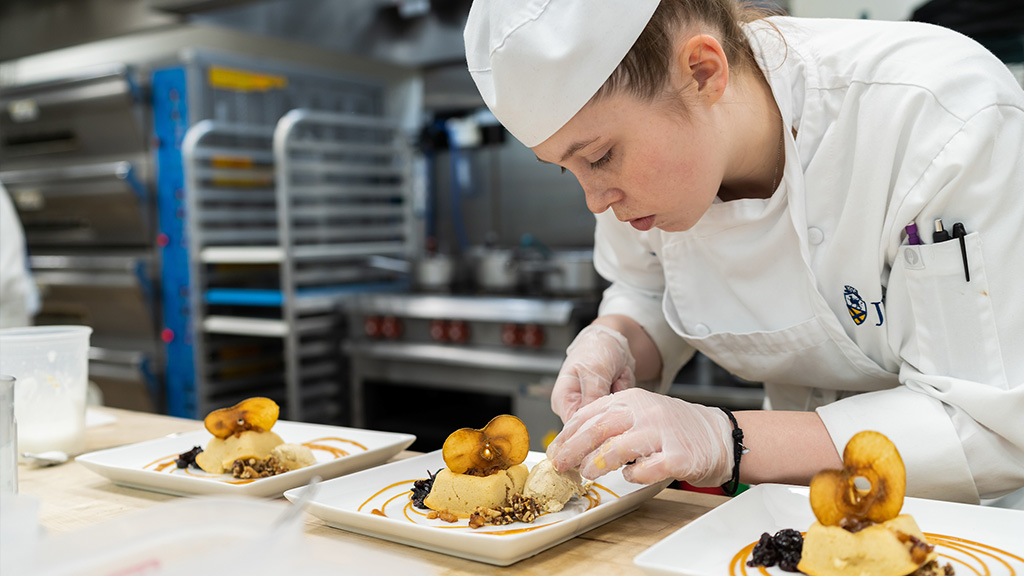
Following those initial sessions, visiting professional food photographers, marketing executives and social media specialists are welcomed into the classroom.
“We are opening our students’ eyes to the potential ways they can, and others do, monetize food media . . . and how the tools of food media can be used. We have had owners of media companies, food stylists, food photographers, social media specialists, bloggers, influencers, podcasters, food writers, food editors, television network producers, television show hosts and competitors of television competition shows come work with the students either on their own projects or just to tell their stories,” says McGee.
Food Media’s Fast-Paced Evolution
“Food is the latest spectator sport as this generation continues to be driven by speed and ease of access. We’ve gone from leisurely flipping through gourmet food magazines and cookbooks to watching high-speed interactive cooking contests, mukbang videos and easily accessible recipe demos on our phones,” says Stewart.
Consumers want to access information quickly, and we can only expect this to accelerate.
Challenges Facing the Food Media Industry
Consumers are becoming more skeptical of what they see and hear. While truth in advertising is the goal, audiences prefer to view quality images of food. Moving forward in the food media realm, exceeding the expectations of the consumer may be a challenge. Keeping current with the unbelievable pace of media trends becomes the biggest challenge for marketers and content creators.
Businesses find success when they accurately identify the needs of their target market and use the appropriate communication platforms to promote their products and services. Different consumer groups already have their preferred communication modes, so marketing specialists need to pinpoint the most logical connection between the consumer group and the media platform. Should a fine dining restaurant create TikTok videos? That mode may not be the best match to reach their ideal client.
